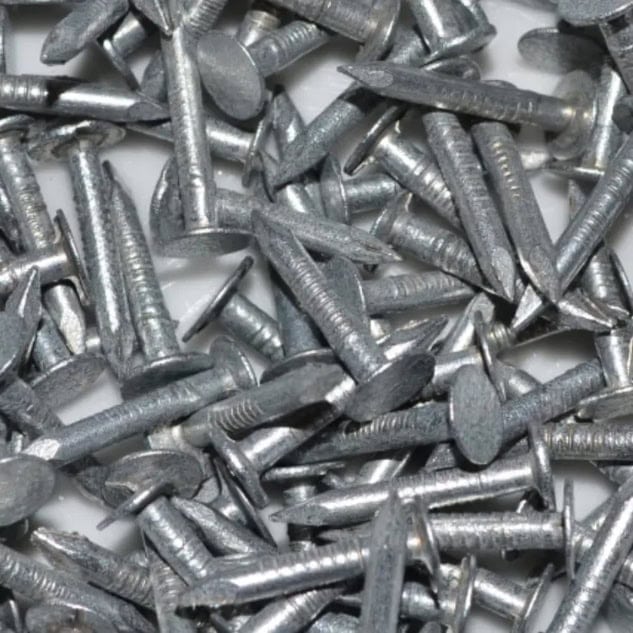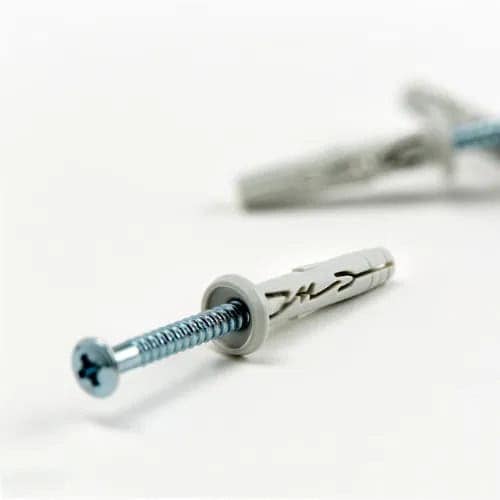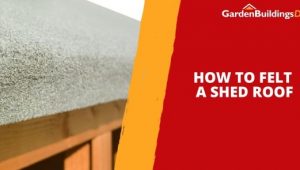Jump to:
Nails and screws are handy whether you’re putting up a wooden shed or fixing something onto it. Both are types of fasteners, but they don’t offer the same level of hold. This guide explains each side by side to help DIYers, like you, decide which one is best to use.
The Basics of Nails and Screws
Nails are metal pins with a flat head, commonly used to fasten timber pieces. You drive them in using a hammer or nail gun. They hold by friction—once in, the wood grips the shaft, a.k.a. the long, cylindrical part of the nail.
Screws are mechanical fasteners with a threaded shaft and a slotted head. They go in using a drill or driver. The threads bite into the wood and hold it in place by tightening as they go in.
The main difference is how they’re inserted and how they hold.
Nails vs Screws for Shed Strength Comparison
Nails are smooth and rely on friction between the wood and the shaft. Quicker to drive in, especially with a nail gun. They’re also better at absorbing movement and sudden force without snapping. Though they can be difficult to grip unless you’ve left the head exposed.
In contrast, screws twist in and grip the wood thanks to their threads. This gives them firmer holding power, particularly where the wood may shift or expand. Unscrew them counterclockwise to remove and reuse if needed—it’s as simple as that.
When to Use Nails on Shed Cladding

Nails are best for framing or areas that will face a lot of movement or stress quickly. This could be parts of the shed that might flex or shift slightly as you build, or if the wind hits.
For instance, securing felt roof shingles with these 10mm nails or nailing floorboards. They’re also a good option for working on a large section, like cladding. You can hammer them in fast, especially with a nail gun.
Where Screws Work Best on Shed Cladding

Screws are better suited for areas or objects that need to be tightened or adjusted later. One example is securing a shed frame, which may need realignment over time.
Or doors or shelves where you might need to go back and unscrew things to adjust or replace them. Screws are better here because they’re easy to remove and reuse.
Also, since they hold tighter than nails, they’re good for solid fixings, like shed floors or support beams. Screws are less likely to work loose, too, if the wood moves or settles. This makes them more reliable for heavier fixings or where they’re regularly used.
A Mix of Both Can Work
You don’t always have to stick with just nails or screws—using both often makes more sense. In fact, most shed builders use a mix, choosing what suits each part of the job.
Prefab sheds or shed kits often come with a mix of fixings, too. Some parts might be designed for nails, others for screws. This depends on what they’re holding and how the shed is meant to go together.
Things to Consider
- What available tools do you have? If you’ve got a hammer, nails are the way to go. But if you’ve got a drill or driver, screws are straightforward too. A nail gun speeds things up for big jobs, but not everyone has one.
- Are you a beginner DIY builder? If yes, screws might be the better pick. You can take them out if you make a mistake.
- How big is the project? For larger sections like cladding or roof frames, nails are quicker, especially if you’ve got a nail gun. Screws, meanwhile, take more time but are better for smaller parts like door fittings.
Round-up
Choosing between nails and screws depends on the job at hand. Considering the tools you have, your skill level, and the size of the project also helps with the decision. In many cases, though, using both works best!
Read this next if you’re looking for a step-by-step guide on how to build a shed.





